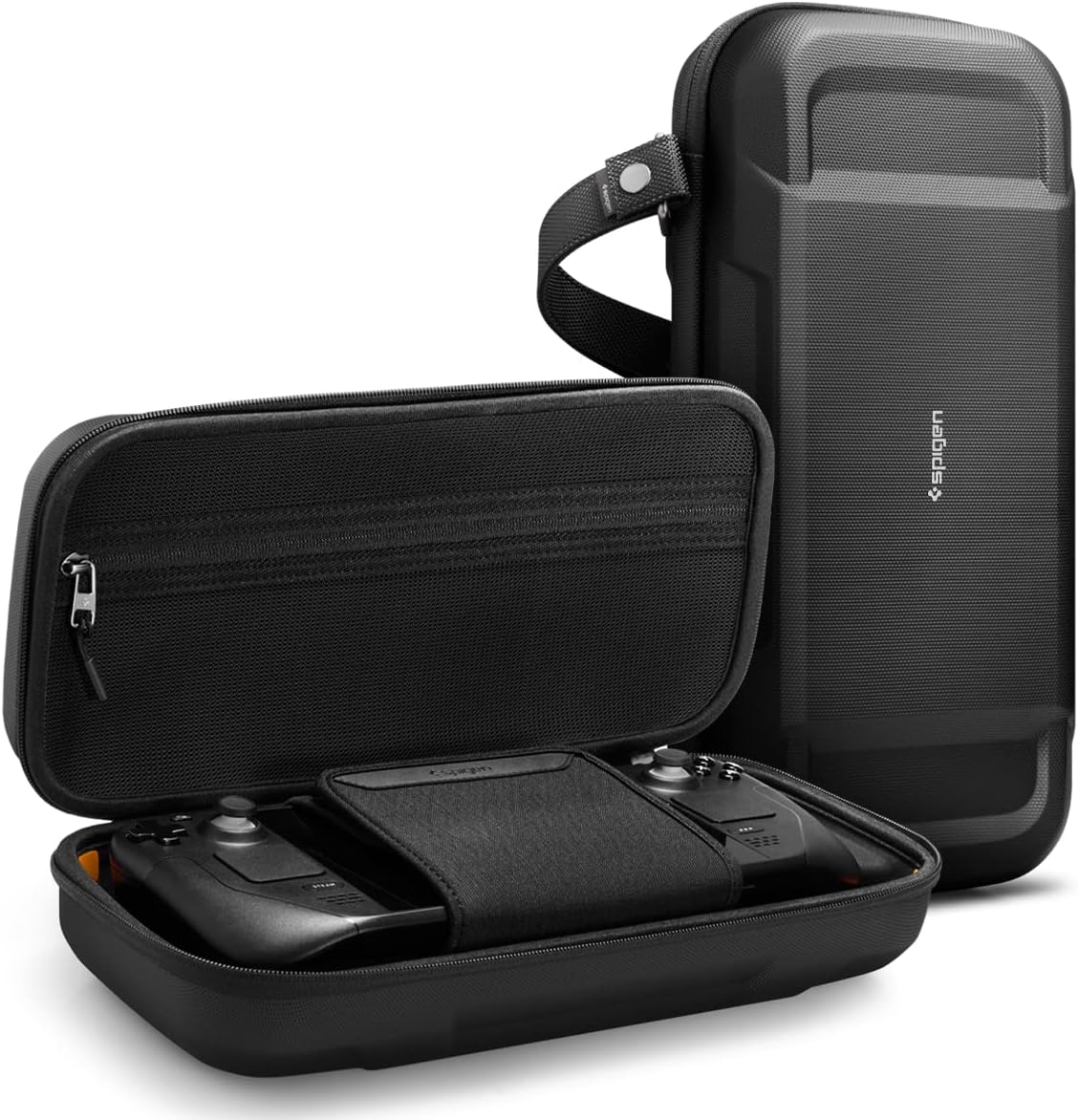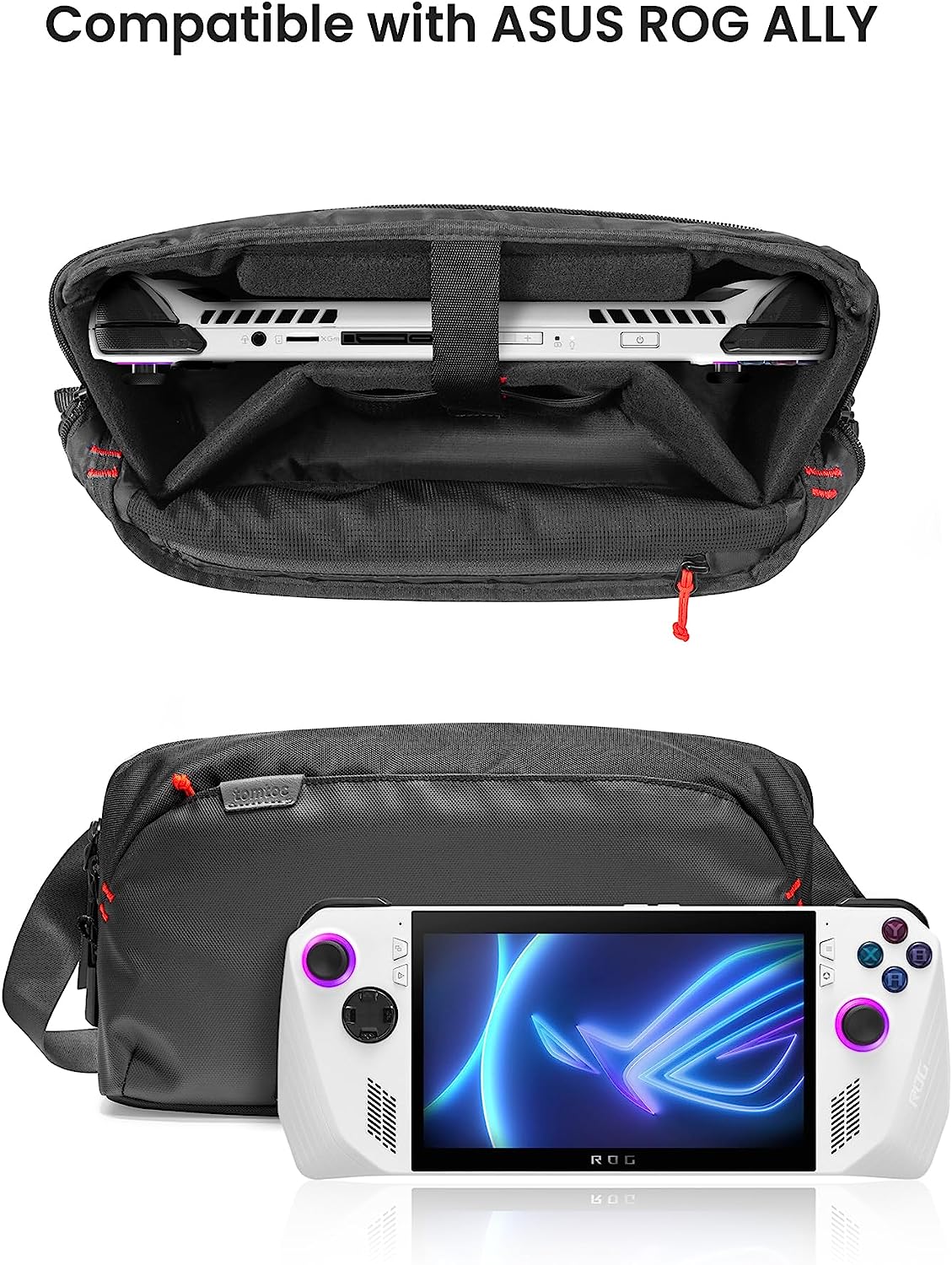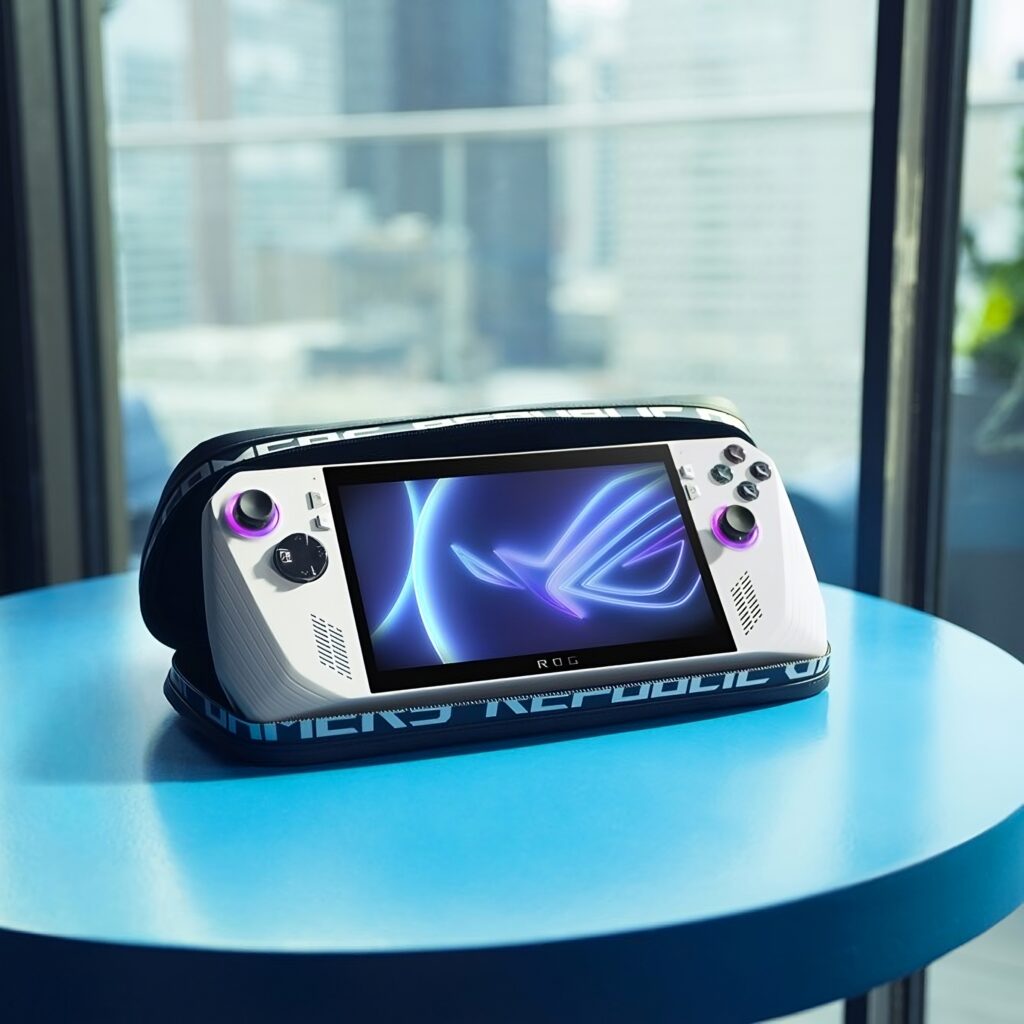Table of Contents
The ASUS ROG Ally is by no means a fragile device, but if taken care of improperly, it can exhibit signs of wear and tear and, much like any other “gadget,” malfunction. The screen might break or shatter should you drop it, the shoulder buttons might stop working, its “face buttons” might get stuck when depressed, and the outer shell/casing might crack or bend.
Most of these things cannot really happen while you’re at home (at least not if you’re even remotely careful), but while you’re out and about, during those long commutes and moments when patience is scarce and caution recedes, accidents can happen.
Do You Really Need a Protective Case for the ROG Ally?
Unlike Valve, ASUS doesn’t provide any kind of carrying case by default which means that you have to source your own. This, one could argue, is both good and bad; it’s good because you have a much wider range of options to choose from, and it’s bad because it’s an additional investment you’re probably not all too happy about — you’ve just spent seven hundred dollars (or almost eight hundred euros) on the ROG Ally itself.
Then again, it is an expensive device, and you wouldn’t want anything to happen to it after making such a hefty investment. A carrying case of some kind, one could argue, is basically a must.
The ROG Ally has been selling in much larger volumes than one would expect. This, in turn, has led to a myriad of different accessory manufacturers to come up with their own unique designs and offerings — we’re talking about bespoke cases, sling bags, peripherals, and add-ons, some of which are more alluring than others.
Most carrying cases that were purpose-built for the Steam Deck are also a good option as that device is actually ever so slightly larger than the Ally. Most of them won’t provide a perfect/snug fit, but they’ll do a great job nonetheless at protecting your handheld gaming PC.
Note: The ROG Ally is still a pretty novel device, and it hasn’t been out for that long which means it doesn’t have as wide an array of options as Valve’s Steam Deck. Still, third-party manufacturers have been rather quick in coming up with bespoke accessories, so there’s definitely a sufficient list for one to choose from.
So, without any further ado, what are the best ASUS ROG Ally cases out there?
ROG Ally Carrying Cases [Hard/Soft]
Here’s a list of our favorites:

Spigen Rugged Armor Pro
This one’s actually designed for the Steam Deck, but the ROG Ally fits in perfectly and so does its charger. It’s also a hard case and has been drop tested which means you can rest assured that your Ally isn’t going to shatter into a million pieces if you happen to drop it.
There’s also ample space for a USB hub, a few microSD cards, wireless headphones, and even an external SSD or two. There’s really nothing to complain about.

Tomtoc Carrying Case
This carrying case from Tomtoc is amongst the most stylish out there, and while it is on the pricier side, its thoughtful design cannot be brought into question. It’s spill resistant, incredibly well-built, and can be used for a myriad of other devices as well.
Much like the Spigen one up top, it, too, can be used to store a vast array of peripherals — SSDs, wireless mice, chargers, headphones, and so on and so forth.

JSAUX Carrying Case
Another stellar option. The JSAUX Carrying Case is a hard shell crossbody sling bag and, as such, can be used to store a lot more than just an ASUS ROG Ally. It looks great, is appropriately priced, and has more separate compartments than we’d care to count.
It’ll easily handle the ROG Ally, its included 65W charger, an external power bank, headphones, SSDs, a USB-C hub, and whatever else you might want to have available while traveling or commuting.
Other Notable Mentions
There’s no shortage of carrying cases out there on Amazon and AliExpress, most of which are both sufficient in design and relatively cheap. Some of them are incredibly well-built whereas others only satisfy the minimum, but they’re all better than nothing.
If the case you’re looking at can accommodate a Steam Deck, odds are, it can accommodate the ASUS ROG Ally as well. Do make sure to read a few reviews before taking the plunge, though — just to be safe.
Is the Official ROG Ally Carrying Case Worth It?
Not really. It’s a solid option overall, but it’s also overpriced, doesn’t have all that much padding, and contains no room or space for the included ROG charger — which, if you’re prone to playing AAA titles, you’ll need to use at least once or twice per day. You can cram it inside but doing so will inevitably create pressure on your Ally which, needless to say, should be avoided.
In other words: it pales in comparison to most other “top-tier” cases on the market, most of which are either cheaper or cost about the same. It is aesthetically pleasing, though, so if you’re looking to have a full ROG-branded setup, it might be worth the investment.
If you’re interested in learning more about it (and why it’s not such a good investment), make sure to watch the following video:
Protective Shells [Hard/Soft]
Buying just a protective shell is yet another viable option, but it might add to the overall bulkiness of the device and, needless to say, the material from which it is made will heavily impact the overall gaming experience.
There are clear TPU shells, silicon ones, and a host of other more durable options, some of which even come with a built-in kickstand — which, to be fair, you may or may not need depending on the way you game.
We’re not all that partial to these protective shells and cases, though, as they’re often not particularly well-built. Some of them aren’t “snug” enough whereas others stick onto the Ally a bit too much.
Moreover, the ROG Ally — if pushed to its limits — can get incredibly hot (unless you set a more aggressive fan curve). We’re talking about a kind of temperature that could easily, over time, end up deforming any subpar shell you might have. It’s a long shot, sure, but by no means is it impossible.
Regardless, we’d definitely lean towards a carrying case from Spigen, Tomtoc, or JSAUX as opposed to most TPU shells which can currently be found on Amazon and AliExpress. Our opinion on this might change in the future as better shells become available, but in the meantime, they’re probably not that good of an investment.
Conclusion — Best ASUS ROG Ally Cases
Buying some kind of case for your ROG Ally is, in many ways, a highly advisable investment. It’s not a must per se, but having something to protect your handheld PC while you’re out and about is about as important as it gets — regardless if you’re extremely cautious or not.
Accidents happen, and seeing how the ROG Ally isn’t nearly as user-friendly to repair as Valve’s Steam Deck, a crack or two might prove to be a much bigger problem than one would expect. The Ally is a really well-built device, but it still features a plastic enclosure and, much like many of its competitors, it doesn’t stand much of a chance should it come in contact with a hard surface.
Having a case to protect its screen, ports, and buttons is of the utmost importance. You should, at the very least, invest in something like the Wmool Hard Carrying Case. It currently retails for about $15 and, while by no means as layered or versatile as the best options out there, is still sufficient for the vast majority of users and their needs.

